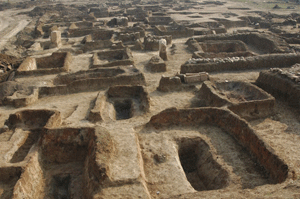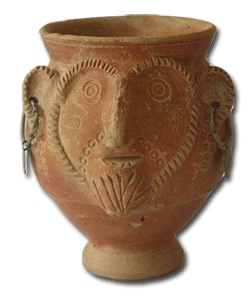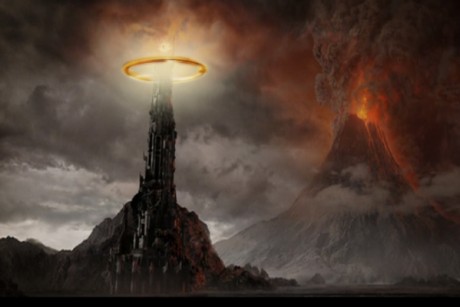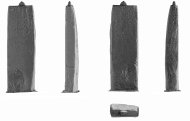Ancient tomb found at 'Sweden's Stonehenge'
Ancient,ArchaeoHeritage,Archaeology,Breakingnews,Europe,Northern Europe,Sweden12:00 PMSwedish archaeologists have unearthed what is presumed to be a dolmen, or a portal tomb, that is believed to be over 5,000 years old near the megalithic monument Ale’s stones in southern Sweden.
”The findings confirm what we have believed; that this has been a special place for a very long time,” said archaeologist Bengt Söderberg to news agency TT.
On Saturday, the first day of the dig, the scientists already had a hunch that they would find something on the site, expecting a Stone Age grave and a Bronze Age monument.
And since, the hunch has become stronger.
“Let me put it like this: it looks bloody good,” said archaeologist Björn Wallebom of the Swedish National Heritage Board (Riksantikvarieämbetet) to local paper Skånskan.
Despite a few days of rain, the archaeologists have managed to uncover enough of the site to see that what they have found is like to be a dolmen, a type of megalithic tomb, most often consisting of three or more upright stones supporting a large flat horizontal capstone.
“It doesn’t have to be a chieftain buried here, it could be a wealthy farmer,” said Söderberg to local paper Ystads Allehanda.
According to reports, the archaeologists have found what they believe is an imprint of the tomb, which must have consisted of very heavy rocks as the impression was solid.
“It was like cement at the bottom. It points to it being pressed down hard,” Wallebom told the paper.
The archaeologists have also found what they believe to be the wall imprints.
“The imprints are very clear. Our hypothesis has definitely become more likely. This dig has all the recognizable components,” said Wallebom.
While digging up the barrow, the archaeologists also found a flint scraper tool.
“It is a standard tool from the stone-and bronze age,” said Söderberg to Ystads Allehanda.
However, despite the importance of the find, this was just a preliminary dig and the shaft is to be filled up on Monday.
According to the experts, a full excavation would be necessary in order to get a full view of what is buried on the site.
And a new dig could be on the cards as the find to some extent rewrites the history of the place, according to Wallbom.
“That’s what makes this dig so interesting, its location near the Ale Stones. Everyone knows the Ale stones and now we can discern a pre-history and a different context,” said Wallbom to Skånskan.
The Ale's Stones (Ales stenar) is a megalithic monument sometimes referred to as "Sweden's Stonehenge" and located about 10 kilometres southeast of Ystad in Skåne overlooking the sea in southern Sweden.
The site consists of 59 large sandstone boulders weighing about 1.8-tonnes each and arranged in the shape of a 67-metre long ship.
According to Scanian folklore, a legendary king named King Ale lies buried there
 |
| Sweden's 'Stonehenge', the Ale's Stones in Skane [Credit: Xuanxu/Flickr[ |
On Saturday, the first day of the dig, the scientists already had a hunch that they would find something on the site, expecting a Stone Age grave and a Bronze Age monument.
And since, the hunch has become stronger.
“Let me put it like this: it looks bloody good,” said archaeologist Björn Wallebom of the Swedish National Heritage Board (Riksantikvarieämbetet) to local paper Skånskan.
Despite a few days of rain, the archaeologists have managed to uncover enough of the site to see that what they have found is like to be a dolmen, a type of megalithic tomb, most often consisting of three or more upright stones supporting a large flat horizontal capstone.
“It doesn’t have to be a chieftain buried here, it could be a wealthy farmer,” said Söderberg to local paper Ystads Allehanda.
According to reports, the archaeologists have found what they believe is an imprint of the tomb, which must have consisted of very heavy rocks as the impression was solid.
“It was like cement at the bottom. It points to it being pressed down hard,” Wallebom told the paper.
The archaeologists have also found what they believe to be the wall imprints.
“The imprints are very clear. Our hypothesis has definitely become more likely. This dig has all the recognizable components,” said Wallebom.
While digging up the barrow, the archaeologists also found a flint scraper tool.
“It is a standard tool from the stone-and bronze age,” said Söderberg to Ystads Allehanda.
However, despite the importance of the find, this was just a preliminary dig and the shaft is to be filled up on Monday.
According to the experts, a full excavation would be necessary in order to get a full view of what is buried on the site.
And a new dig could be on the cards as the find to some extent rewrites the history of the place, according to Wallbom.
“That’s what makes this dig so interesting, its location near the Ale Stones. Everyone knows the Ale stones and now we can discern a pre-history and a different context,” said Wallbom to Skånskan.
The Ale's Stones (Ales stenar) is a megalithic monument sometimes referred to as "Sweden's Stonehenge" and located about 10 kilometres southeast of Ystad in Skåne overlooking the sea in southern Sweden.
The site consists of 59 large sandstone boulders weighing about 1.8-tonnes each and arranged in the shape of a 67-metre long ship.
According to Scanian folklore, a legendary king named King Ale lies buried there













